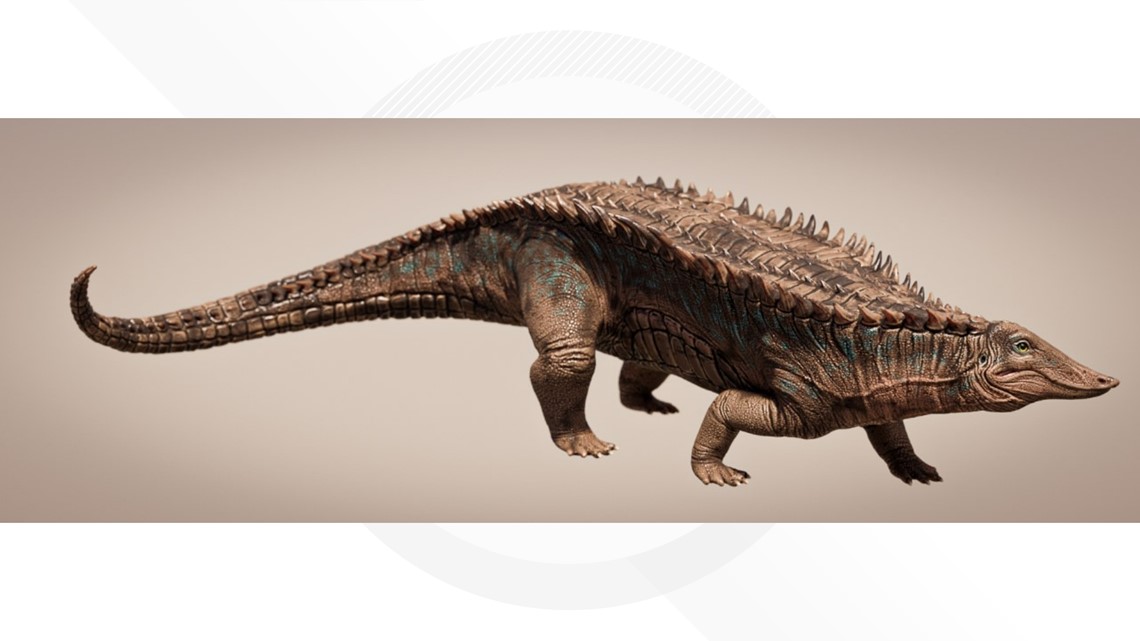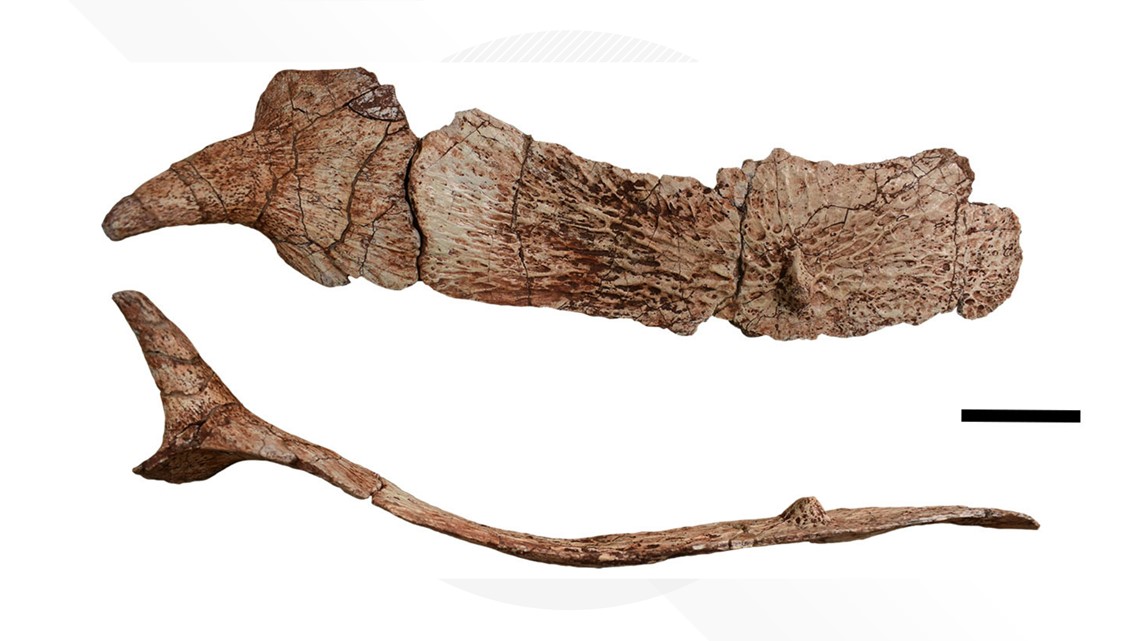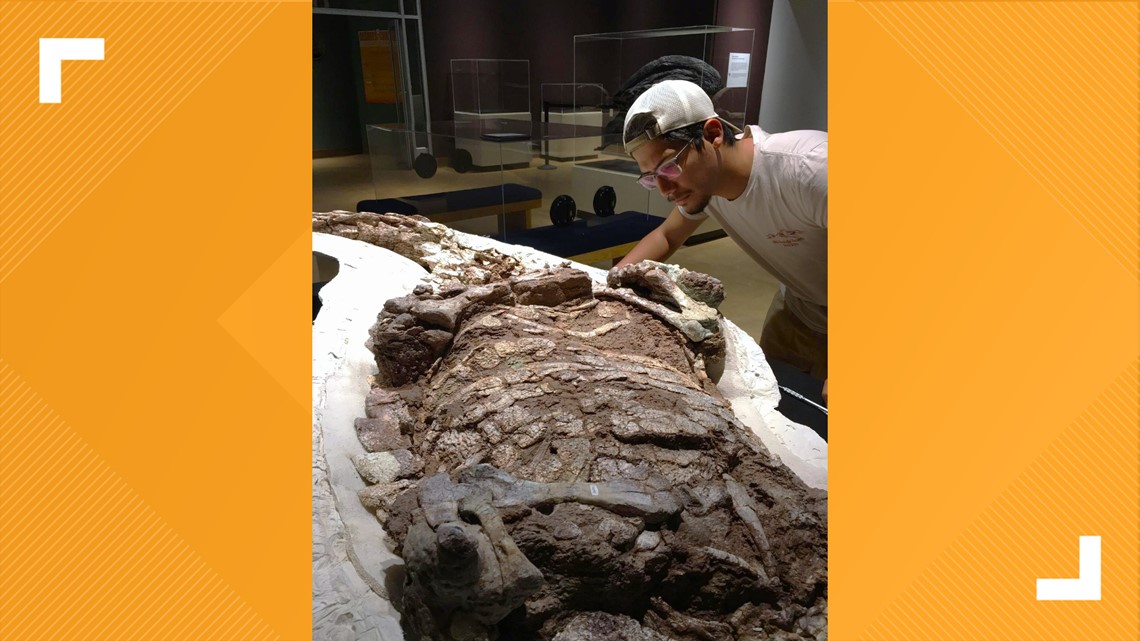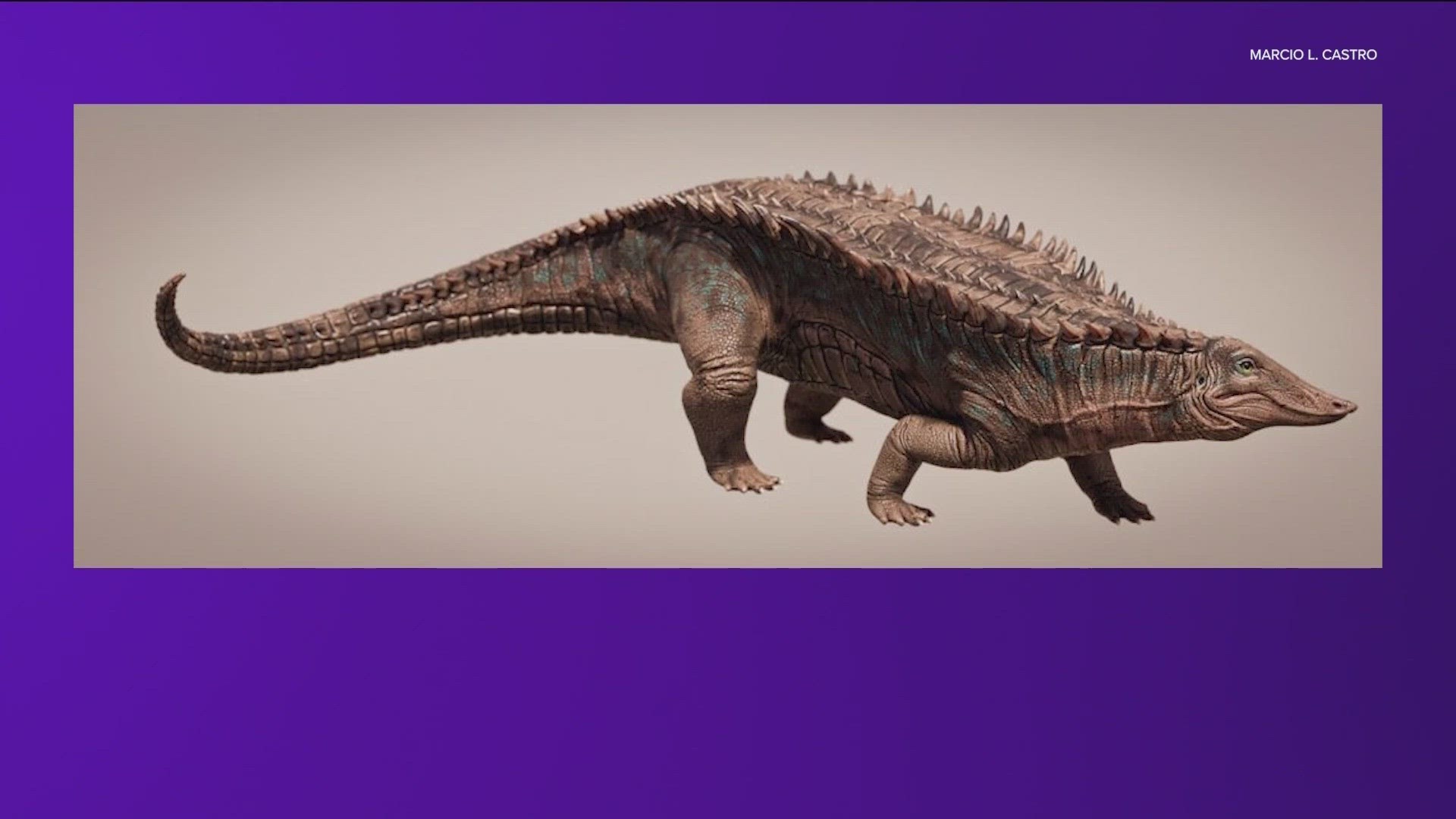AUSTIN, Texas — Researchers at the University of Texas at Austin are studying a very old, heavily armored cousin of the modern crocodile.
According to UT, aetosaurs – the likely omnivorous ancestors of the carnivore crocodiles we know today – ruled the world even before dinosaurs did. They went extinct around 200 million years ago, and their fossils have been found on every continent except Antarctica and Australia.
Scientists use the bony plates that make up aetosaurs' armor to identify different species, but they typically don't have a lot to work with. But now a group of UT Austin researchers has published a study centered on an aetosaur suit of armor that is about 70% complete and covers each major region of the body.
William Reyes, a doctoral student at UT's Jackson School of Geoscience, led the research. He said this suit includes elements of the back of the aetosaur's neck and its shoulder region, all the way to the tip of its tail.
The researchers used the armor to identify the specimen as a new aetosaur species, which they named Garzapelta muelleri. UT said the name "Garza" comes from Garza County, where the fossils were found, while "pelta" is Latin for shield and "muelleri" honors the paleontologist who originally discovered it, Bill Mueller.
The researchers have determined that Garzapelta lived about 215 million years ago, and they looked quite a bit like the modern American crocodile.


What have researchers learned from the armor so far?
UT said the bony plates that made up the aetosaurs' armor are called osteoderms, named for the fact that they were embedded directly into the skin and fitted together like a mosaic.
But that's not where the aetosaurs' protection stopped. Some aetosaur species, including Garzapelta, had sides flanked by curved spikes.
Reyes said several unique features on Garzapelta's plates marked it as a new species, including how the plates fit together and unique bumps and ridges on the bones.


What else could the researchers learn?
Garzapelta is part of Texas Tech University's fossil collection, where it spent most of the past three decades on a shelf before Reyes encountered it during a visit.
According to UT, in addition to different species having different armor, it's possible an animal's age or sex could also affect the appearance of its armor. Reyes is actively exploring those questions by studying other aetosaur fossils in the Jackson School's collection.


Reyes' coauthors on the study are Jeffrey Martz, an associate professor at the University of Houston-Downtown, and Bryan Small, a research associate at the Museum of Texas Tech University.

